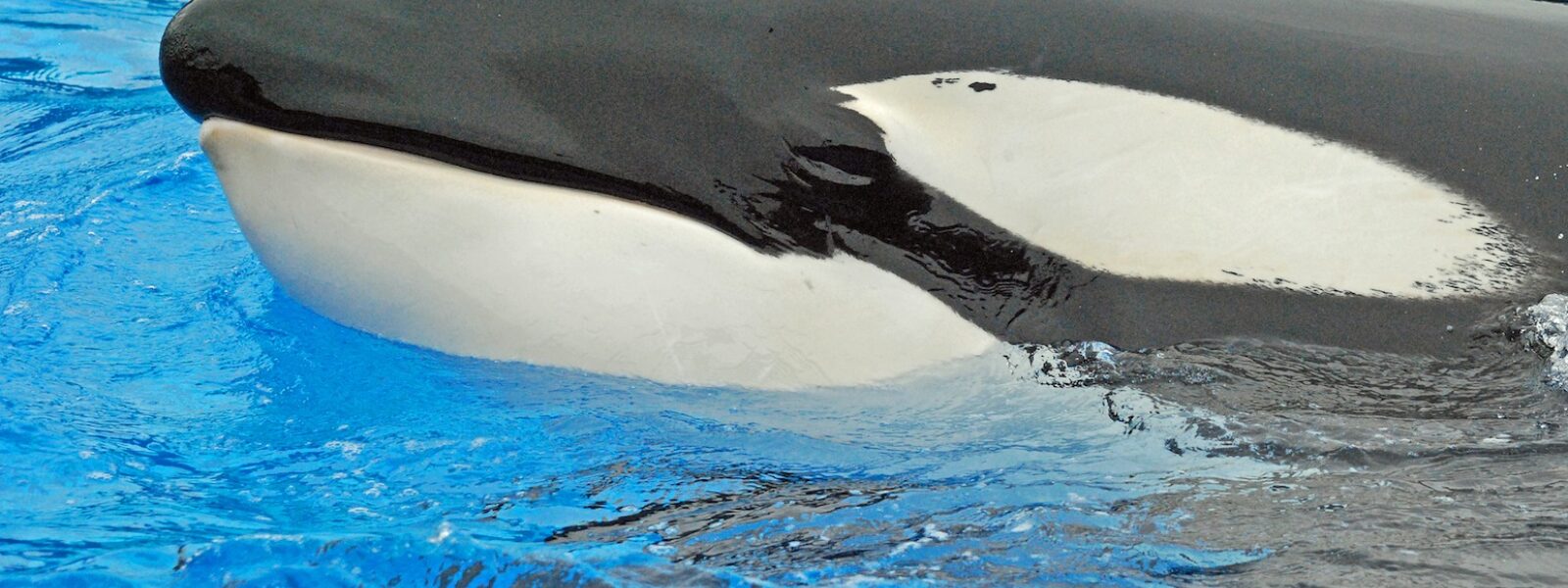

Today, SeaWorld announced that Tilikum, one of the oldest (but by no means old) male orcas in captivity has died.
Tilikum came to the public’s attention with the 2010 death of SeaWorld trainer Dawn Brancheau, an experienced and charismatic staff person. The details of Dawn’s death have been glossed over by SeaWorld – according to a story in the BBC, they were told by SeaWorld just last year that "[Brancheau's death] was not an attack, this was a terrible accident".
Later, Tilikum was the focus of the documentary “Blackfish”, which told quite a different story about Dawn’s death and Tilikum’s involvement in two other deaths, one a trainer and the other a trespasser found dead in Tilikum’s tank. Both were aggressively attacked by Tilikum, contrary to claims by SeaWorld.
The reasons SeaWorld tried to hide Tilikum’s aggression are not hard to find – SeaWorld’s whole business model is based on convincing the public that orcas, one of the largest predators in the ocean, are “friendly” and “happy” and safe for families to enjoy as large performing toys. Admitting that these orcas actually would attack and tear apart a trainer, as happened to Ms. Brancheau, would not be helpful publicity to the park. “Blackfish” exposed the false “friendly” façade brilliantly, using former SeaWorld trainers as spokespersons for the documentary – people who loved their whales but could not bear to continue to claim that orcas were “thriving” in captivity.
Another reason to hold onto Tilikum was that his sperm, artificially milked by trainers, was used successfully to force artificial breeding, resulting in the births of 14 orca calves, all still performing at SeaWorld (those, anyway, that are still alive).
After a campaign by Earth Island’s International Marine Mammal Project (IMMP) and other organizations in California, SeaWorld finally announced last March an end to breeding orcas in captivity. They just ended the circus-like orca show in SeaWorld San Diego, claiming they will prepare a new orca show based on more natural behaviors and information rather than the loud music and razzle-dazzle of the recent show, but that old show is still going on in SeaWorld San Antonio and Orlando.
Another false statement made by SeaWorld and repeated in many mainstream stories is that Tilikum grabbed Dawn Brancheau by her ponytail and pulled her into the tank, thus putting the blame on Brancheau for the attack. In fact, former trainers have stated that SeaWorld orcas were specifically trained to ignore ponytails, conditioning them to avoid just such a problem. Several witnesses, contrary to SeaWorld’s claim, state that Brancheau was seized by her arm by Tilikum, not her ponytail. The attack was certainly not her fault.
Captivity is bad for orcas. They are too attached to their families in the wild, as Tilikum was ripped from his family in Iceland to be trained to do tricks for dead fish. He lived his life in small netted pens in British Columbia (where he was housed as a young orca with two aggressive females, as documented in “Blackfish”) and in small concrete tanks in SeaWorld Orlando. He suffered from a long-term infection that could not be cured by antibiotics, according to SeaWorld, although the cause of death is still being researched.
Now, SeaWorld has 22 orcas instead of 23 (but one is reported pregnant in SeaWorld San Antonio). IMMP believes SeaWorld should retire all their orcas and other cetaceans (dolphins, beluga whales, and pilot whales) and transfer them to sea sanctuaries, allowing them to have a better life no longer confined to heavily chlorinated seawater in small concrete tanks.
Tilikum’s death should remind us that the suffering continues in captivity for all these whales and dolphins.
Photo of Tilikum by Mark J. Palmer/IMMP.